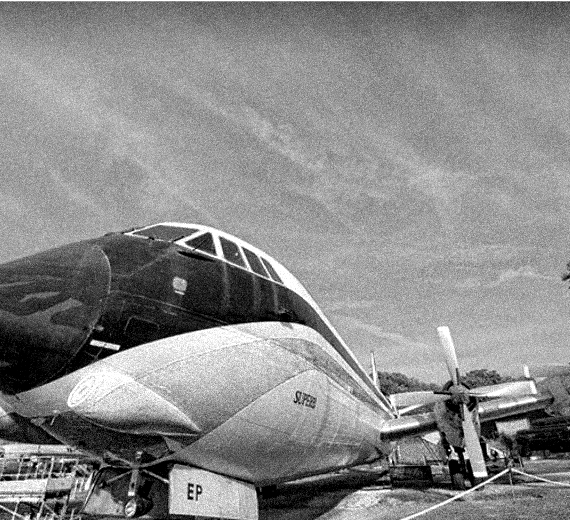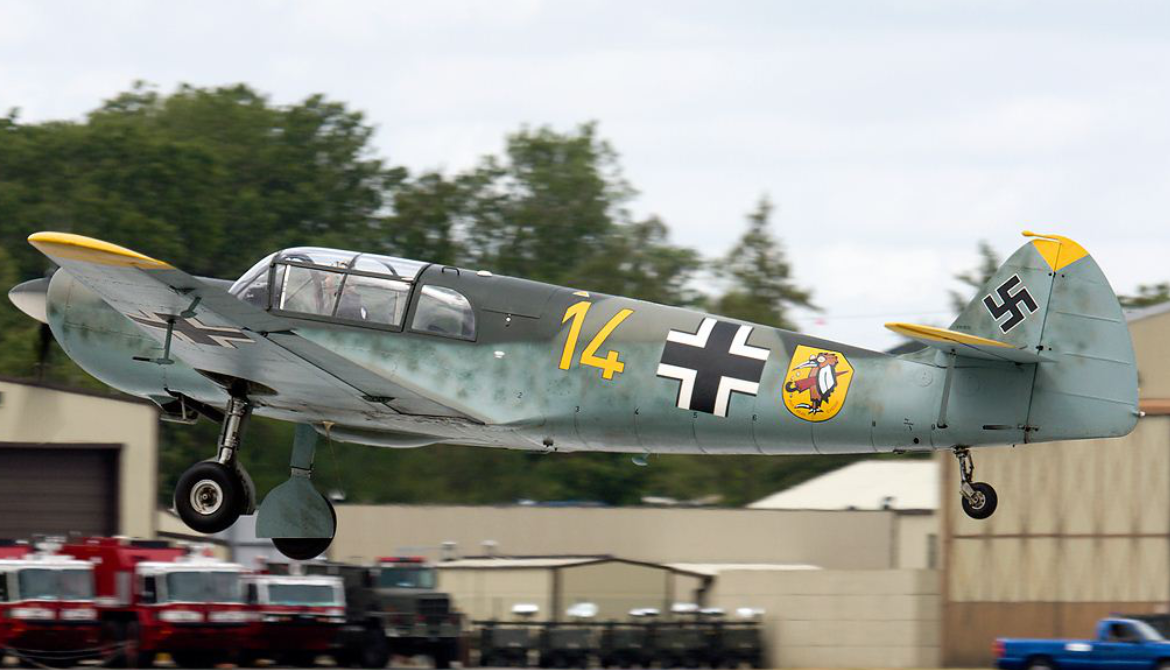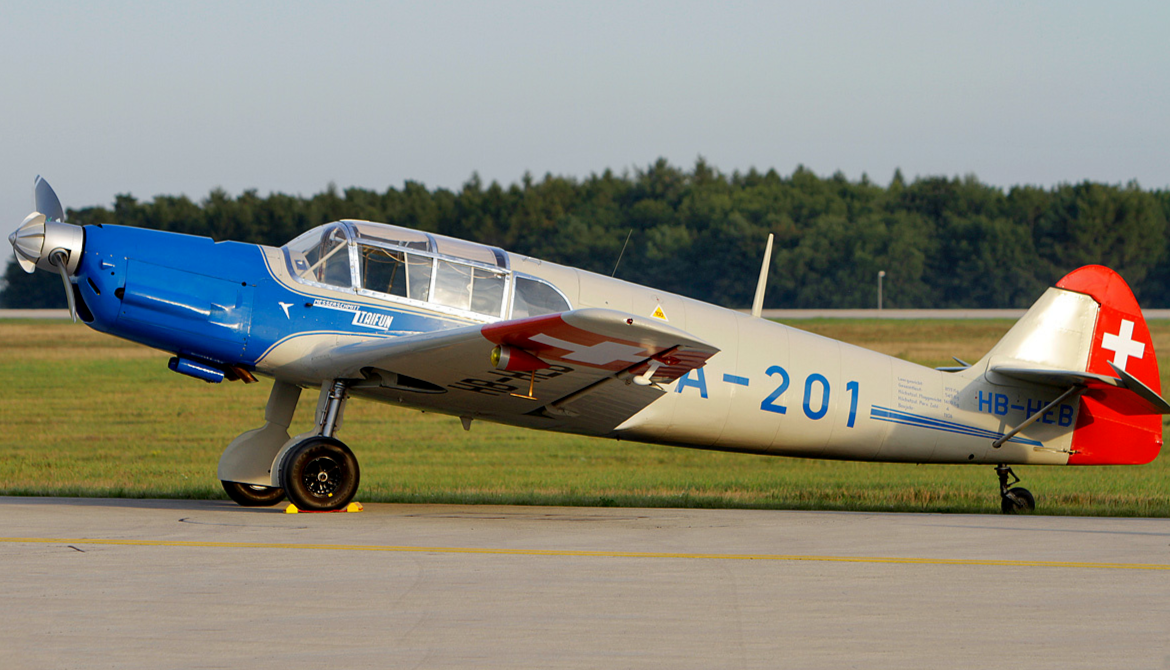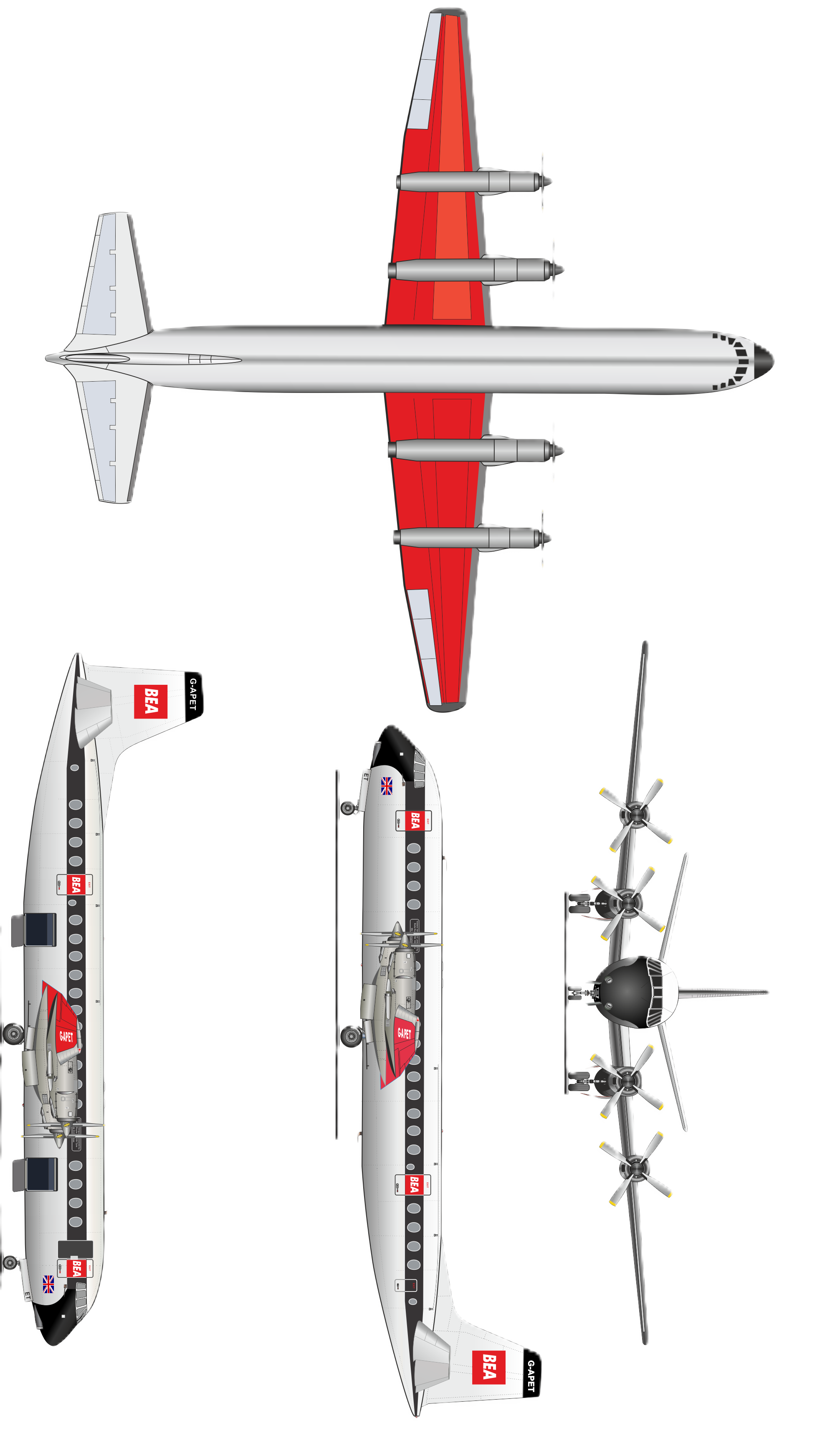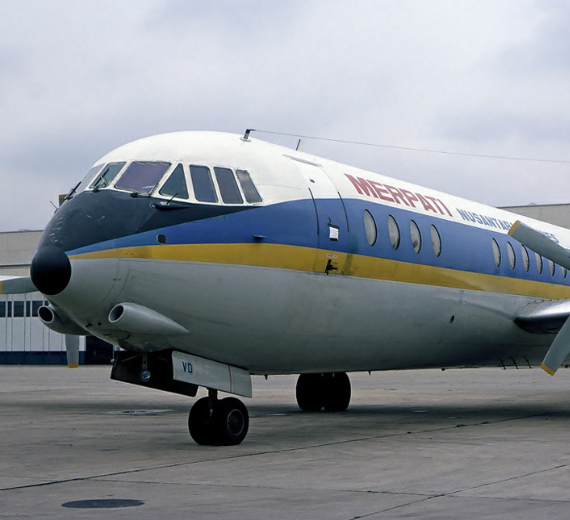Vickers Limited
Vickers Vanguard 952
 |
|
| Role | Airliner |
|---|---|
| National origin | United Kingdom |
| Manufacturer | Vickers-Armstrongs |
| First flight | 20 January 1959 |
| Introduction | 17 December 1960 (by British European Airways) |
| Retired | 17 October 1996 |
| Primary users | British European Airways Trans-Canada Air Lines |
| Number built | 44 |
| Developed from | Vickers Viscount |
.
History Vickers Limited Armstrong Whitworth & Co Ltd
Vickers Vanguard turboprop airliner type 952

The Vickers Vanguard was a short/medium-range turboprop airliner designed and produced by the British aircraft manufacturer Vickers-Armstrongs.
The Vanguard was developed during the mid-to-late 1950s in response to a specification issued by British European Airways (BEA) for a 100-seat airliner; Vickers decided to design such an airliner as a follow-up to the existing Viscount series, the principal difference from which being an expanded airframe that provided considerably more internal volume. Another key innovation was the Tyne engine, which was roughly twice as powerful as the Viscount's Rolls-Royce Dart engine, and allowed for increases in both cruising speed and altitude. Throughout the design process, the needs of two airlines, BEA and Trans-Canada Air Lines (TCA), heavily shaped the Vanguard's specifics.
Operational history

The Vanguard entered service with BEA and TCA in late 1960. BEA operated its first Vanguard schedule on 17 December from Heathrow to Paris. Following delivery of its full fleet of six V951 and 14 V953 aircraft by 30 March 1962, the type took over many of BEA's busier European and UK trunk routes. The aircraft received names of famous Royal Navy warships; the first (registered G-APEA) was named "Vanguard", however by the time that the aircraft were delivered, BEA had adopted its new "red square" livery, which saw the end of naming and none of the Vanguards actually carried a name. Initial seating was 18 first-class at the rear and 108 tourist, but this was changed to 139 all-tourist, in which configuration the Vanguard had very low operating costs per seat-mile. On flights up to 300 miles (480 km), such as from London to Paris, Brussels and Amsterdam, the type could match the block times of the pure jets which were being introduced in the early 1960s. The remaining BEA fleet passed to British Airways (BA) on 1 April 1974 and the last BA passenger flight with the type was on 16 June 1974.
TCA initiated Vanguard schedules on 1 February 1961 with two flights from Toronto and Montreal via intermediate stops to Vancouver. The fleet was also used on services from Toronto and Montreal to New York and Nassau, Bahamas. Tyne engine reliability was a concern to the airline in the early 1960s. It had a Constellation on stand-by at Dorval Airport in Montreal and at Toronto to take Vanguard passengers in case an engine failed to start.
Cargo operations

In 1966, Air Canada removed all the seats from one of its aircraft and refitted for pure cargo work, in which role it could carry 42,000 lb (19,000 kg) of freight. Known by the airline as the "Cargoliner", it was the only such conversion, but survived to be the last Canadian Vanguard to be retired in December 1972
0
KmCeiling
0
KmCombat RANGE
0
Km/hAircraft Speed
0
Max Crew
Photo Gallery
Vickers Limited Armstrong Whitworth & Co Ltd
Vickers Vanguard turboprop airliner


Vickers Limited Armstrong Whitworth & Co Ltd
Vickers Viscount type 810
General Info
-
-
- Crew: 3
- Capacity: 139 passengers
- Length: 122 ft 10+1⁄2 in (37.452 m)
- Wingspan: 118 ft 0 in (35.97 m)
- Height: 34 ft 11 in (10.64 m)
-
Powerplant
-
-
- Empty weight: (38,555 kg)
- Gross weight: (63,957 kg)
- Powerplant: 4 × Rolls-Royce Tyne RTy.11 Mk 512 turboprops, 5,545 shp (4,135 kW) each (eshp)
-
Performance
- Cruise speed: 422 mph (679 km/h, 367 kn) at (4,600 m) (high speed cruise)
- Range: 1,830 mi (2,950 km, 1,590 nmi) with maximum payload
.
Links to Youtube & Others
The origins of the Vanguard can be traced back to speculative discussions between Vickers and the airline British European Airways (BEA) conducted as early as 1953, the same year in which the commercially successful Vickers Viscount airliner first entered revenue service.
Vickers Viscount
type 810
The Type 900 was a further revision of the design, featuring an expanded payload capacity of 21,000 lb (9,500 kg) and carry up to 93 passengers
Youtube Link
The launch of the programme commenced immediately following BEA's initial order for the type.
